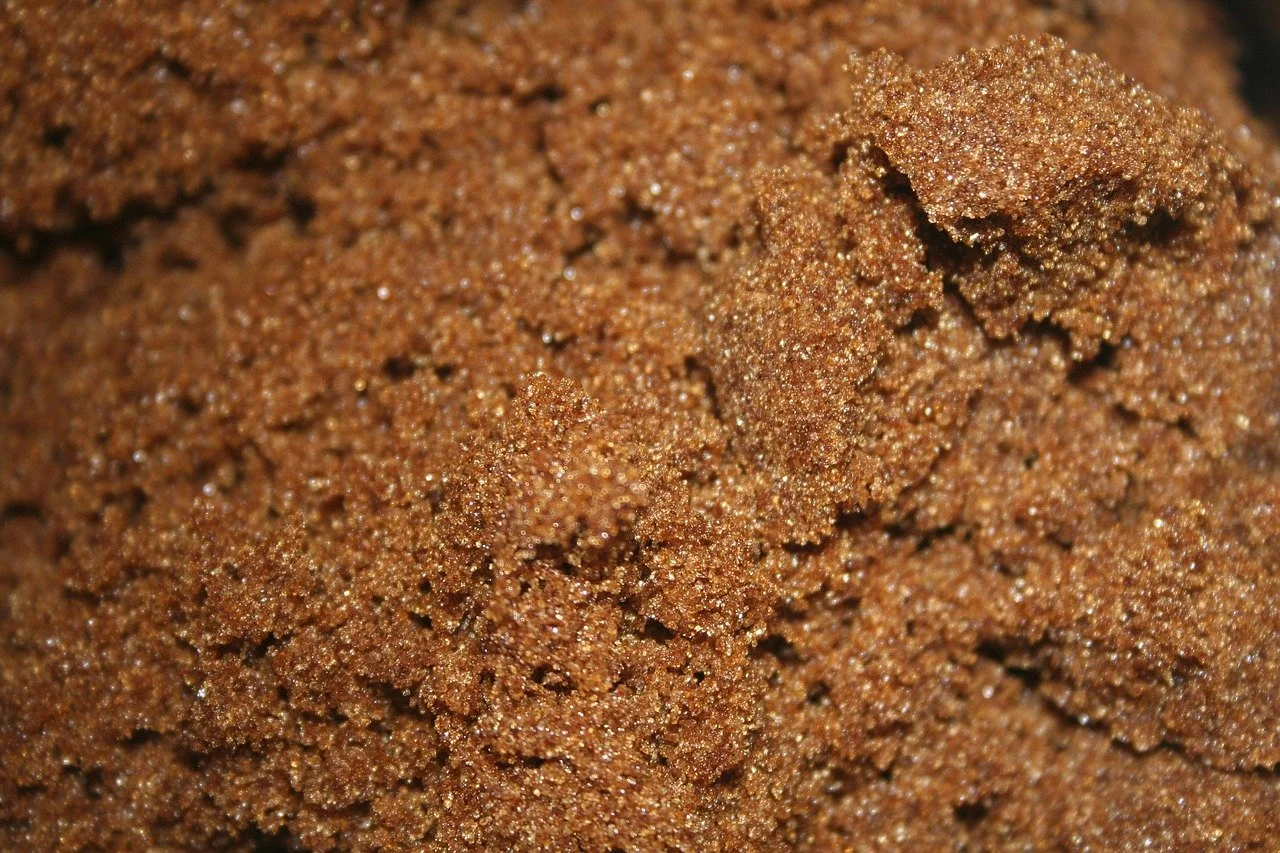Unveiling the Art of BBQ Rubs: Elevate Your Smoking Game
Introduction
In the heart of American BBQ culture, where smoke curls in the air like a savoury incense and the anticipation of a perfectly smoked meal is palpable, one key element stands out—the BBQ rub. It's not just a sprinkle of seasoning; it's the alchemy that transforms ordinary cuts of meat into culinary masterpieces. Today, dear reader, we embark on a flavourful journey, peeling back the layers of mystery that enshroud the art of BBQ rubs. 🔥🔥🔥
What is a BBQ Rub: A Scientific Flavour Symphony
At its scientific core, a BBQ rub is a meticulously curated blend of spices, herbs, and seasonings designed to enhance the flavour, texture, and aroma of meats during the low and slow smoking process.
A BBQ rub, that enchanting elixir transforming humble cuts into culinary masterpieces, owes its magic to a meticulous combination of key constituents. Each element plays a crucial role, contributing to the complex flavour profile and beautiful bark that defines the art of low and slow smoking. Lets get into the usual suspects…
Salt
In the intricate dance of BBQ rubs, salt assumes the role of a molecular conductor, orchestrating essential transformations during the smoking process.
Beyond merely enhancing flavour, salt plays a multifaceted role in breaking down protein structures within the meat. This process, known as denaturation, facilitates the penetration of other spices, ensuring a deep infusion of flavours. Moreover, salt exhibits hygroscopic properties, aiding in moisture retention and imparting juiciness to the final product.
Sugars
In the intricate science of BBQ rubs, sugar is a molecular virtuoso, influencing both flavour and texture during the smoking process. As meat undergoes low and slow cooking, sugar undergoes a transformative process known as caramelization. At elevated temperatures, sugar molecules break down and recombine, creating a myriad of complex flavour compounds. This not only imparts sweetness but contributes to the formation of the coveted bark on the meat's surface.
Sugar also plays a role in moisture retention through its hygroscopic properties, ensuring the meat remains succulent.
You will usually find one of two types of sugar employed in BBQ rubs
Soft Light Brown Sugar: Contains a moderate amount of molasses, giving it a delicate flavour profile. It's commonly used when a subtle sweetness is desired without overpowering the other flavours in the rub.
Soft Dark Brown Sugar: Dark brown sugar has a higher molasses content, resulting in a stronger and more robust flavour. It brings a richer sweetness to the rub and adds a deeper colour to the meat's exterior during the cooking process.
Spices
These are the backbone of a BBQ rub, infusing the meat with distinctive flavours. From the heat of capsaicin in paprika to the warm notes of cumin, spices create the foundation of the rub's flavour alchemy. Below is a list of some the main spices you can expect to find in a BBQ rub.
-
Characteristic: Intense, earthy, and sometimes sweet with varying heat levels.
Scientific Note: Paprika derives its colour and pungency from capsaicin, known for its heat. Its inclusion in a rub contributes depth and a subtle kick.
-
Characteristic: Warm, nutty, and slightly peppery.
Scientific Note: Cumin contains aldehyde compounds like cumin aldehyde, contributing to its nutty and spicy notes. Its inclusion in a rub adds complexity and depth.
-
Characteristic: Spicy and pungent, with variations based on chili pepper types.
Scientific Note: Chili powder, a blend of chili varieties, contains capsaicinoids. These compounds stimulate receptors, creating a sensation of heat. In a rub, it adds spiciness and nuanced flavours.
-
Characteristic: Citrusy, slightly sweet, with warm undertones.
Scientific Note: Coriander seeds contain compounds like linalool and geraniol, contributing to their citrusy and warm notes. In a rub, coriander adds depth and complements other spices.
-
Characteristic: Warm, citrusy, and slightly sweet.
Scientific Note: Cardamom contains compounds like cineol and terpinyl acetate, providing a warm and citrusy aroma. Its inclusion in a rub adds a distinctive flavour, enhancing the overall complexity.
-
Characteristic: Earthy, slightly bitter, with a warm and peppery undertone.
Scientific Note: Turmeric contains curcumin, which contributes to its earthy and slightly bitter flavour. Its inclusion in a rub adds a warm undertone and imparts a golden hue.
-
Characteristic: Warm, sweet, and slightly bitter.
Scientific Note: Cloves contain compounds like eugenol, contributing to their warm and sweet notes. Their inclusion in a rub adds a rich, aromatic complexity.
-
Characteristic: Sweet, warm, and slightly spicy.
Scientific Note: Cinnamon contains cinnamaldehyde, providing its characteristic flavour. Its inclusion in a rub adds sweetness and warmth, balancing the overall spice profile.
-
Characteristic: Anise-like, slightly sweet, with a hint of liquorice.
Scientific Note: Fennel seeds contain anethole, which imparts their anise-like flavour. In a rub, fennel seeds contribute a subtle sweetness and aromatic complexity.
-
Characteristic: Pungent, slightly bitter, with a hint of heat.
Scientific Note: Mustard seeds contain compounds like sinigrin, which contribute to their pungency. Their inclusion in a rub adds a tangy and slightly spicy kick.
Herbs
These guys add depth and freshness to the rub, complementing the robustness of spices. Whether it's the earthy aroma of thyme or the pine-like essence of rosemary, herbs contribute a layer of complexity to the overall flavour profile. See below for the main players used in rub composition.
-
Characteristic: Earthy, aromatic, and slightly minty.
Scientific Note: Thyme contains thymol, an aromatic compound with antiseptic properties. Its complex molecular structure interacts with other rub components, contributing to a well-balanced flavour profile.
-
Characteristic: Pine-like, with a hint of citrus.
Scientific Note: Rosemary's characteristic flavour comes from compounds like 1,8-cineole, providing a fresh, pine-like aroma. The interaction of 1,8-cineole with other rub components adds complexity to the flavour profile.
-
Characteristic: Sweet, peppery, with a hint of clove.
Scientific Note: Basil contains compounds like eugenol, contributing to its peppery and slightly clove-like notes. Its aromatic profile complements the overall herbaceous nature of a rub.
-
Characteristic: Bold, slightly bitter, with a hint of warmth.
Scientific Note: Oregano contains carvacrol, a compound with antimicrobial properties. Its inclusion in a rub adds a bold flavour and contributes to the overall aromatic complexity.
-
Characteristic: Cool, refreshing, with a sweet undertone.
Scientific Note: The cooling sensation in mint is attributed to compounds like menthol. In a rub, mint provides a refreshing contrast, enhancing the overall sensory experience.
-
Characteristic: Bright, fresh, with a mild peppery note.
Scientific Note: Parsley contains myristicin, a compound with a mild peppery flavour. Its inclusion in a rub adds a layer of freshness and balances other robust herbaceous notes.
-
Characteristic: Earthy, savoury, with a slightly bitter edge.
Scientific Note: Sage contains compounds like thujone, which contribute to its characteristic flavour. Its earthy notes add depth to the rub's overall flavour profile.
-
Characteristic: Citrusy, slightly sweet, with a hint of spice.
Scientific Note: Cilantro contains compounds like linalool, providing a citrusy and slightly spicy aroma. Its inclusion in a rub adds a distinctive, fresh dimension.
-
Aromatics like garlic and onion powder contribute to the rub's fragrance. They infuse the meat with savoury notes, enhancing the overall olfactory experience and adding depth to the flavour.
What goes with what?
In the world of BBQ, flavours come to life through the careful selection of herbs and spices. Each meat type presents a canvas for a unique composition, and mastering the balance is the key to creating memorable culinary experiences. Below is a rough guide to what herbs and spices work well with your chosen protein when concocting your rubs. These are only broad strokes mind you and should be taken with a pinch of …salt (sorry, couldn’t resist).
Pork
Herbs: Thyme, sage, rosemary
Spices: Paprika, cumin, garlic powder
Pork's mild flavour welcomes robust herbs like thyme, sage, and rosemary, while spices such as paprika, cumin, and garlic powder enhance its richness. The combination creates a savoury and aromatic profile, perfect for slow-smoked pork.
Beef
Herbs: Rosemary, oregano, thyme
Spices: Black pepper, coriander, smoked paprika
Beef's bold taste pairs well with hearty herbs like rosemary, oregano, and thyme. Black pepper, coriander, and smoked paprika add layers of depth and a touch of smokiness, enhancing the robust flavour of beef during smoking.
Chicken
Herbs: Basil, tarragon, parsley
Spices: Garlic powder, onion powder, dried mustard
Chicken's versatile profile benefits from the lightness of herbs like basil, tarragon, and parsley. Garlic and onion powder add savoury notes, while dried mustard provides a subtle tang, resulting in a balanced and flavourful rub for chicken.
Lamb
Herbs: Mint, rosemary, thyme
Spices: Cumin, coriander, cinnamon
Lamb's distinctive flavour pairs harmoniously with the freshness of mint, the earthiness of rosemary, and the warmth of thyme. Cumin, coriander, and a hint of cinnamon contribute to a rich and aromatic rub that complements the unique taste of lamb.
Fish
Herbs: Dill, cilantro, chives
Spices: Lemon zest, smoked paprika, white pepper
Delicate fish flavours call for light and fresh herbs like dill, cilantro, and chives. Lemon zest provides a citrusy brightness, while smoked paprika and white pepper add subtle smokiness and gentle heat, creating a nuanced rub that enhances the natural taste of fish.
No into going it alone?
Embarking on the journey of crafting the perfect BBQ rub might seem like a labyrinth of herbs and spices, but here's the secret: it's not about having an infinite array of ingredients; it's about mastering the art of proportions. The magic lies in the precise balance of each element. However, for those of you who prefer to savour the results without diving into the spice cabinet, fear not! We've curated a list of epic, ready-made rubs that encapsulate the essence of barbecue perfection.
Meat Church BBQ Honey Hog BBQ rub s a carnivore's delight, blending honey sweetness with savoury perfection.
Angus & Oink Dirty Cow rub provides an intense umami flavour that goes awesomely with the richness of beef. Enhanced by unique elements like fresh coffee beans and Javanese sugar and a hint of chipotle.
Plowboys BBQ Yardbird award-winning rub is a savoury masterpiece with a touch of sweetness that is followed on the back of the tongue with just a little heat.
Angus & Oink Shawarma lamb rub has been crafted to bring the heady fragrance and tantalising taste of Lebanese kebabs to your dining table.
Parting words
Wishing you the best of luck as you master the art of rub application and transform every cut into a culinary masterpiece. Here's to savouring the sweet success of your smoked creations—may they be as unforgettable as the journey itself. Happy smoking, and may the rubs be ever in your favour! 🔥🔥🔥















